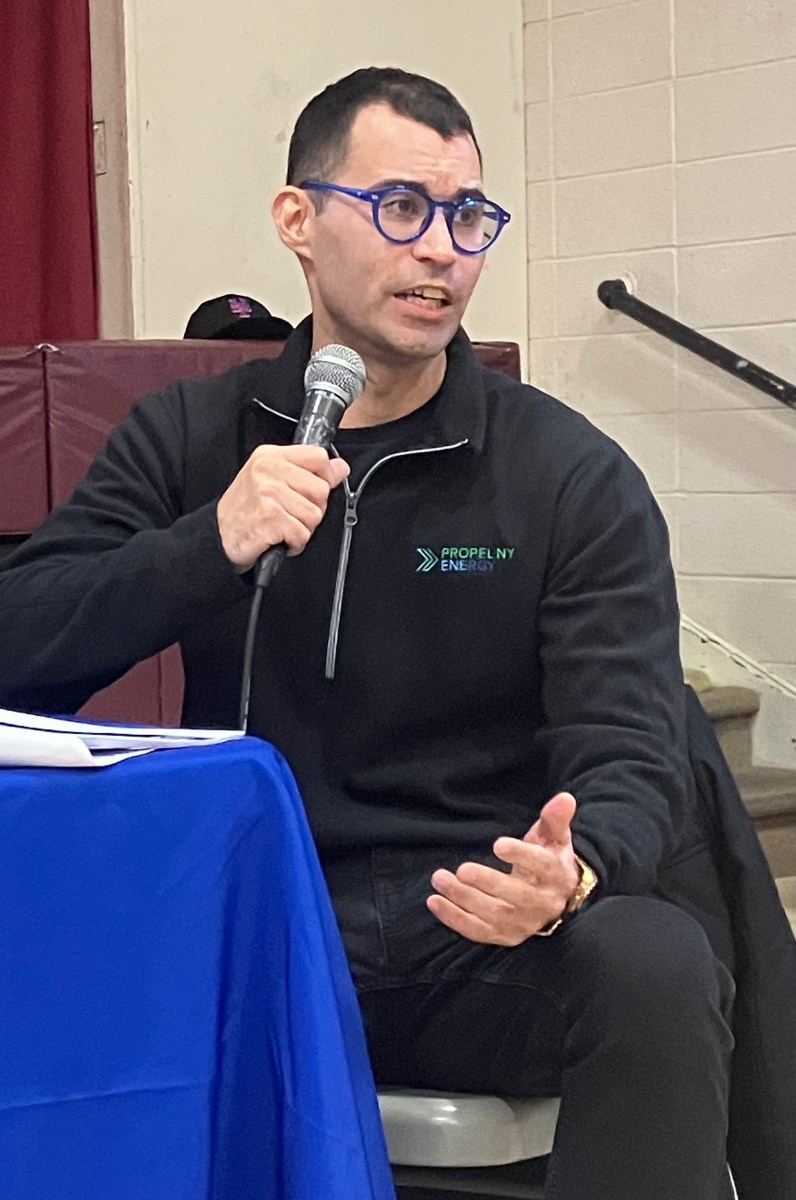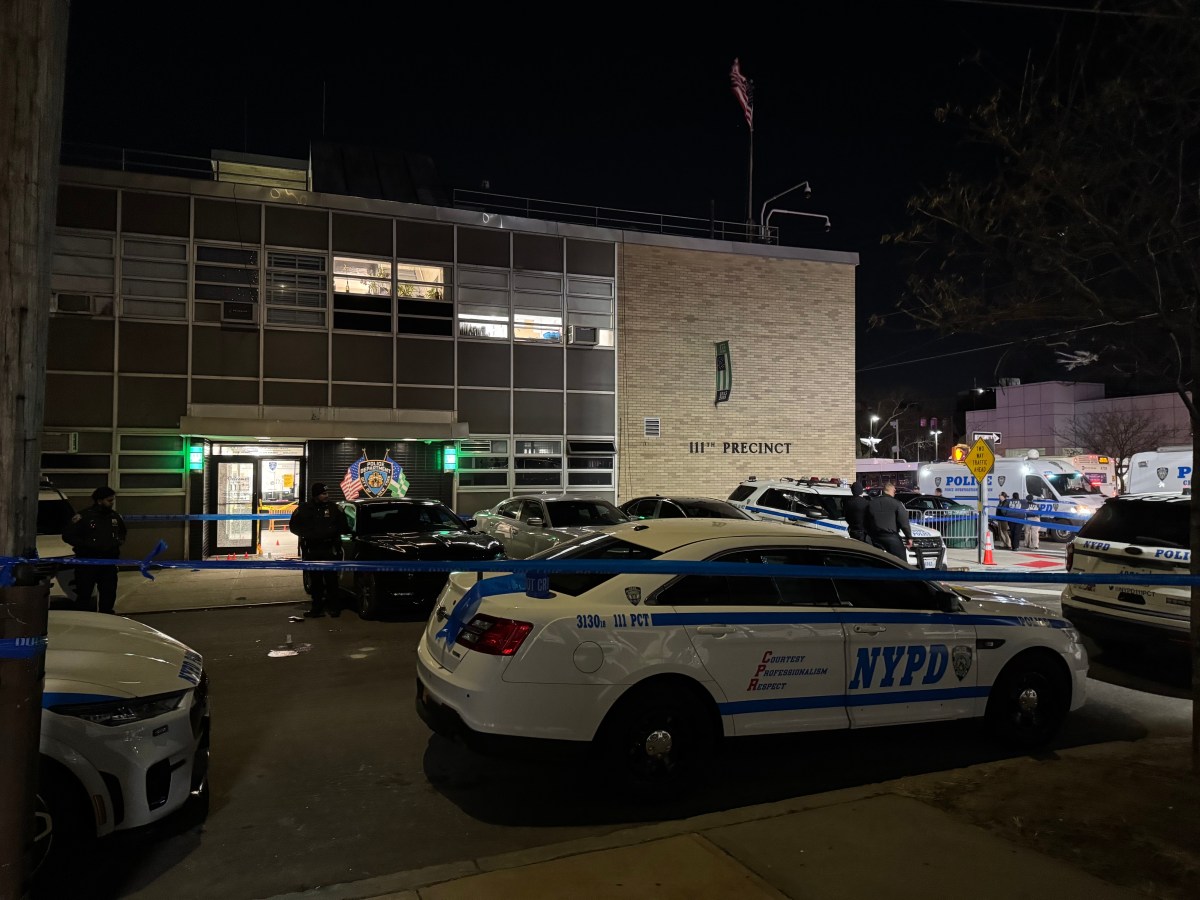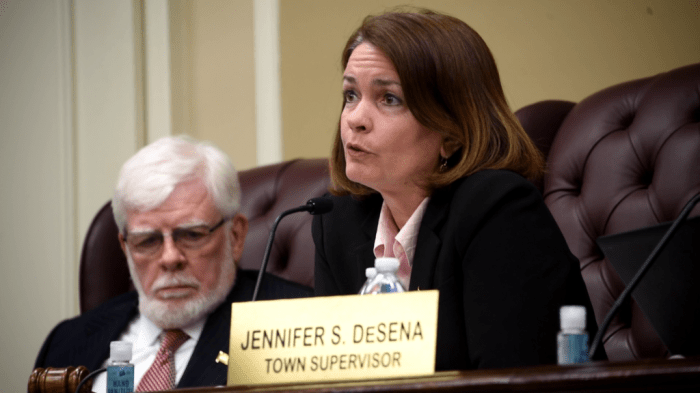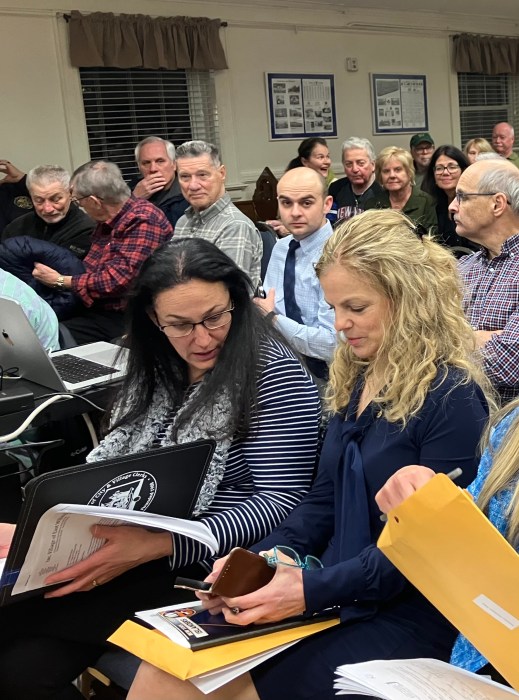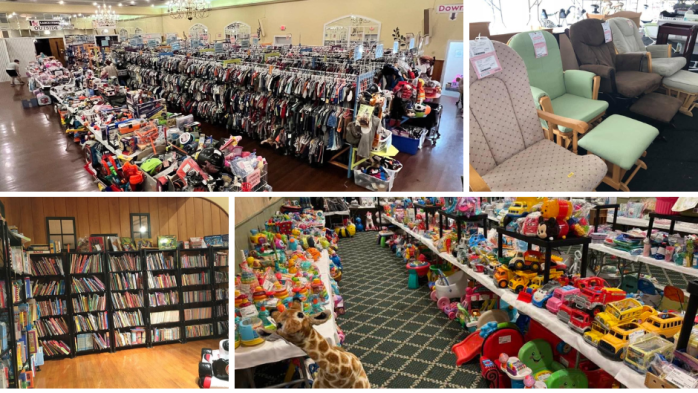The team behind a new proposed transmission line project held an informational session in Mineola last Wednesday night, during which residents raised concerns regarding the project’s perceived ties to offshore wind, health issues, the construction’s proximity to homes, and the arrangement of the proposed line.
Propel New York, the public-private partnership behind an electrical transmission line project set to be constructed downstate, chose Mineola for its series of informational sessions because it is one of the villages the nearly 90-mile transmission line is slated to run through.
“We want to make sure that you understand how transmission works, how it’s important, Propel’s role in bolstering the grid in New York State, the permitting process, where to access facts about this job and how to stay involved and engaged,” Quentin McMahon, a senior project director for the New York State Power Authority, told over a dozen people gathered in the village’s community center to start the meeting, emphasizing the project’s commitment to informing people the line would be located near.
Propel is led jointly by the public NYPA and private New York Transco, a New York developer, owner, and operator of bulk electrical transmission facilities. At the informational session, representatives from the project’s engineering firm, WSP, joined Propel.
The Propel team said the project would bolster the state’s power grid by providing additional pathways for all energy sources, including coal, natural gas, offshore wind, and nuclear power, to run through the system.
Once completed, this transmission line would increase reliability and resiliency within the state’s electric grid, which will help communities recover faster and avoid blackouts during extreme weather events while supporting more efficient and economical energy flow, the team added.
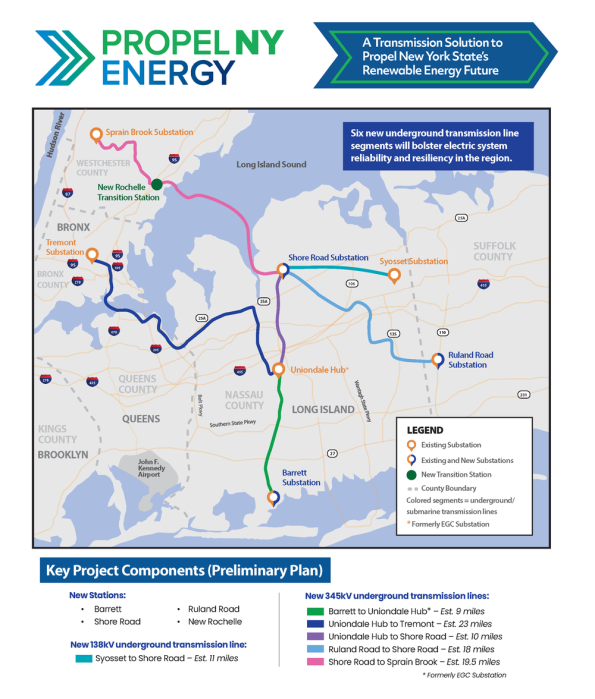
“We are the highway to move power from where it’s made at a power plant to where it needs to go in your community,” said McMahon. “Transmission is a key aspect of our American life. It runs 24 hours a day, seven days a week, 365 days a year. It runs on the hottest day of the year and on the coldest day of the year. Our life is running in this country because we have a strong background of transmission, taking power from where it’s made, which is often quite far away, and bringing it to where it’s needed, to your local community.”
He explained that the $3.2 billion project, which is still undergoing a two-year permitting process, will run primarily underground through Nassau County, including a portion underwater in the Long Island Sound, as well as parts of Queens, Bronx, and Suffolk counties. The line will be primarily located under the towns of North Hempstead, Hempstead, and Oyster Bay and abut approximately 7,000 homes, businesses, and community facilities in Nassau County. The project also includes four new electrical substations, or facilities inside electrical grids that serve as intermediaries between transmission systems and consumers.
Propel New York expects its permits to be approved and construction on the line to begin in early or mid-2026. The project is expected to be completed in 2030. To date, the team said they have run extensive environmental, health, and planning studies as they have engaged in pre-permitting and permitting processes for over a year. All studies are publicly available.
About a dozen people raised concerns during the portion of Wednesday’s informational meeting open for public comment, including a handful who expressed concerns that the project was an offshore wind and battery storage project, which they opposed.
The Propel team consistently responded to these concerns by stating that the transmission line was not tied to any specific energy source and instead would connect to any energy generation source available to power the state’s grid.
“We are agnostic to the type of energy used,” Peter Koncelik, an engineer from WSP, said. “As soon as we plug into the existing system, the New York Independent System Operator, the transmission operator, [chooses] what the most economical power source is [each day]. That’s ultimately the power source [that] flows along all the transmission lines,” he explained, emphasizing that no one source would be prioritized and the Propel team had no control over what energy source would run through its line.
Other attendees raised health concerns about the electric and magnetic fields produced by the project, expressing apprehension about living near the transmission lines. Propel team members said residents should not be concerned, citing multiple studies.
“No negative human or animal health impacts have been found in 40-plus years of EMF research by credible scientific or health organizations,” the multiple team members told the public.
A few attendees came to the meeting from Oyster Bay with concerns regarding the arrangement of the electrical lines around the town, which sees two lines of different voltages, one at 138kV and one at 345kV, co-located, or placed nearby, around the town.
“Our community is ground zero for this project. We have many homes that are surrounded on three and four sides by the project, and our community is genuinely concerned,” said Christine Pancci, a resident of Glen Head.
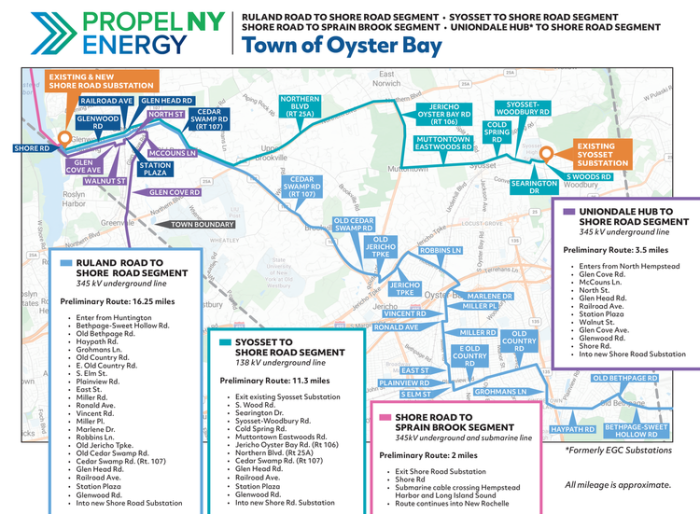
“While it is most common to see multiple lines of the same voltage co-located, routing of multiple lines with different voltages is necessary when interconnecting different stations in a geographic area,” the Propel team said in a statement after the meeting. “In New York City, multiple underground lines exist in both residential and commercial areas, including in Manhattan and the Bronx, where there are instances of three transmission lines (345kV and 138kV) under a single city street.”
“The approach to co-locating multiple lines of varying voltages is common, safe and proven for both underground and overhead lines in urban, suburban and rural areas,” the team added.
Attendees did not appear satisfied with the team’s answers, with some under their breath calling them “a joke ” after the team responded to their questions during the meeting.
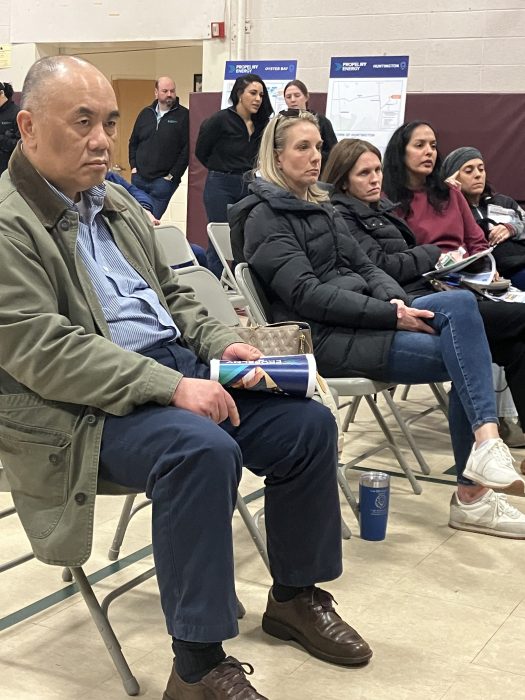
“We’ve come to many of these meetings, and we get very big generalities,” Pancci said after the meeting. “It’s our health and safety. So, to say that community members should not be as concerned as we are is just quite insulting.”
She added that she thought the Propel team should “go back to the drawing board”, then return to the community and engage in in-depth conversations.
“To date, across Nassau County, our team has placed more than 30 ads and knocked on nearly 300 doors. We have also conducted hundreds of briefings with municipalities, civic organizations, community groups, NGOs, businesses, residents and others,” the Propel team, who emphasized all of their permits and studies have been made publicly available, said. “We are committed to community engagement and welcome suggestions for future meetings.”




